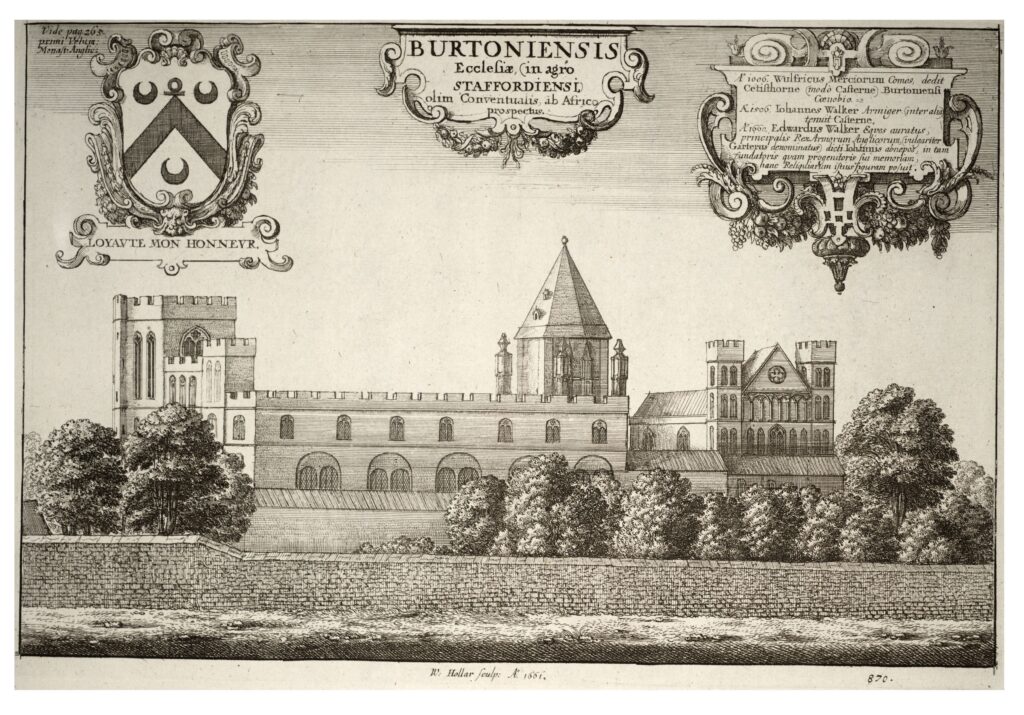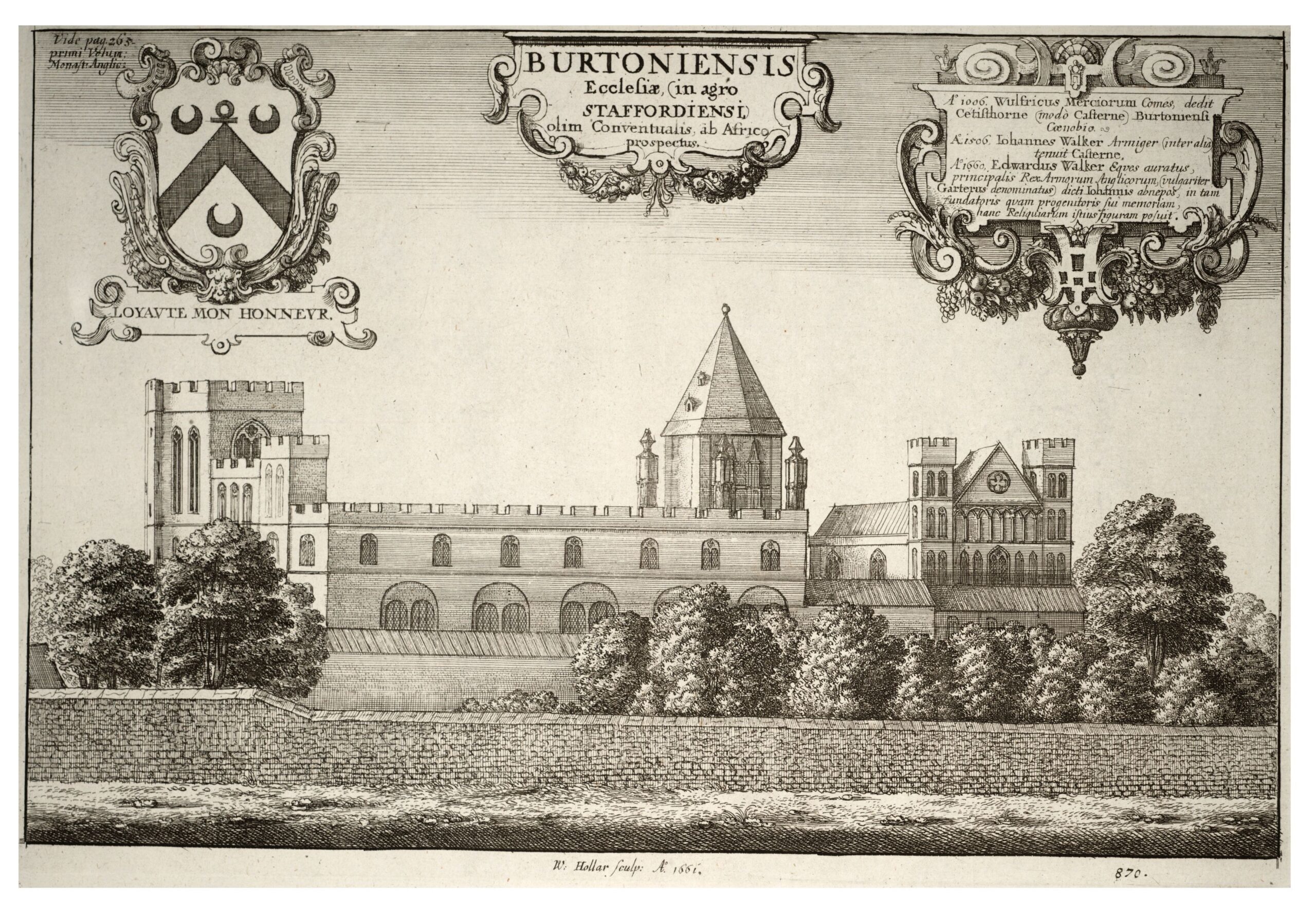From the time of St. Augustine’s papal mission of converting the Anglo-Saxons in Britain in 597AD to King Henry VIII’s stubborn break with the Catholic church, monasticism has forever been clubbed with Christian lives all over England. Monasteries became places of religious settlements where communities of monks and priests lived ordinary lives under religious obligations with a consistent routine. Such places held more importance than just being institutions of worship, education, and welfare. They wielded authority and power over extensive lands that came under their jurisdictions, proving to be sources of perpetual wealth and political influence for them.

Early history
Since its birth, Burton abbey has been a target of relentless misery at the hands of self-serving, lazy abbots, supreme mismanagement, and religious negligence, contradictory to most Benedictine houses of its time. According to the annals of Burton, its founder, Wulfric Spot, is believed to have left vast landholdings worth £700 to the abbey. Nevertheless, his surviving will surely suggest that his endowment was tremendous, even though not much of it was left in abbey’s possession after the Danish incursions in the early 11th century, and what persisted was left only of properties at Staffordshire and Derbyshire.
In Staffordshire, the remaining lands included Burton, Stretton, Bromley, ‘Bedintun’ (seemingly near Pillaton in Penkridge), Whiston, Darlaston, Leigh, and Okeover. Ilam, Calton, and Castern were held by the abbey during the 12th century but might have been mentioned in the Domesday survey under Okeover. In Derbyshire, only Winshill, Sutton, Ticknall, and Appleby endured.
Administration and economy
The following centuries for Burton abbey constantly see-sawed between joy and despair. By the mid 11th century, the abbey had expelled two of its abbots upon squandering of lands to relatives. The papal confirmation of 1185 pertains to the fact that the abbey had numerous churches, chapels, and tithes in its possession. However, most of them were founded on the estates given as a gift by Wulfric and the rest by William the Conqueror. Pope Lucius verified that the church at Mickleover and its chapels together with Saint Mary’s at Derby were given to the abbey as benefactions by William I. The churches at Leigh, Bromley, Ilam, Stapenhill, and Willington with their respective chapels were also mentioned by Bishop Peche (1161-82) in his confirmation of abbey’s possessions.
Even though there were no major additions to the abbey’s property, small purchases of lands and incomes through them were made. This entailed the accession of a salt-pit and salt-pan at Nanwitch between 1189 and 1197, a half a manor property and advowson claim (the right of presentation of a candidate to a church office) at Austrey in the late 13th century, and in about 1320 a Sinai park at Shobnall, which became a place of retreat for monks at least three times a year after their session of bloodletting.
By 1535, the chapel of St. Modwen at Andresey, brought in an income of £2 a year from all the pilgrimage offerings. Even so, the abbey’s breadwinning was through the administration of its territories. It was under Abbot Melbourne (1200-14) that the royal charter of borough status was granted to Burton by King John. Then under Abbot Richard de Lisle (1222-9) in 1222, Abbot Bromley was also granted the borough status. The abbey thus had two boroughs in its estate and eventually became the most high-powered land in all of Staffordshire.
The most important feature of 14th-century abbey had been the establishment of granges at Shobnall, Stapenhill, Stretton, and Winshill. Another one was inaugurated at Hunsdon (in Derby) in the early 15th century. Of all of which, only Shobnall was still running by the abbey directly whilst the others were leased out in the 1520s and 1530s. There was a sudden turn in the economic life in the late 13th century, as the monks actively engaged in the cloth markets and Brother Robert of Stapenhill installed a fulling mill at Trent.
Abbot, prior, subprior, precentor, cellarer, Kitchener, chamberlain, infirmarian, hospitaller, and almoner were some of the offices held at Burton abbey. By the 16th century, one person is said to have been handling at least two offices. Although the abbot was accepted as the chief of the community, he was naturally expected to consult with the rest of the brethren over matters concerning the abbey. This was not put into writing until 1306: the abbot was not to appoint any obedientiary (the holder of a minor position of responsibility in a monastery) nor allowed to alienate land or wood without the approval of the rest of the council and it was also necessary for the abbot to deliver all accounts of his management once a year to the prior and any two of the members.
Even then, complaints were registered by the bishop on his next visitation in 1422 that the abbot failed to hold regular meetings and was also unable to produce accounts, all of which was admitted by the abbot with reluctance. The council believed that the abbot made money on the side with enfeoffment (invest with a freehold estate in the land) deals. It was also noted during the visit that the abbot had his apartment on the west side of the abbey, complete with a separate kitchen for his household.
The financial situation of the abbey was never too great. It has been said to be one of the poorest religious houses in the British Isles. In 1225, the abbey set out to alleviate some of its debts by granting one of its manors in fee for 100 marks. The transaction was later regretted upon stumbling on the fact that the manor was actually worth 20 marks a year in rent. The Pope then had to intervene to put the matter to bed.
Distress seems to have been magnified later in the abbey’s history. In 1319, on the request of the community, the king took the house under his protection and appointed a royal clerk as the keeper of the house. The following year, however, the protection was revoked, again on the request of the community. The same scenarios kept happening throughout its history of standing. Every visitation from the Bishop was also met with more complaints about the finances, maladministration, isolation of lands, and lack of record of an inventory, rentals, pensions, and corrodies. The Bishop had to replace those in offices, order for restorations of isolated lands, and enforce the importance of bookkeeping and presentation of all accounts.





